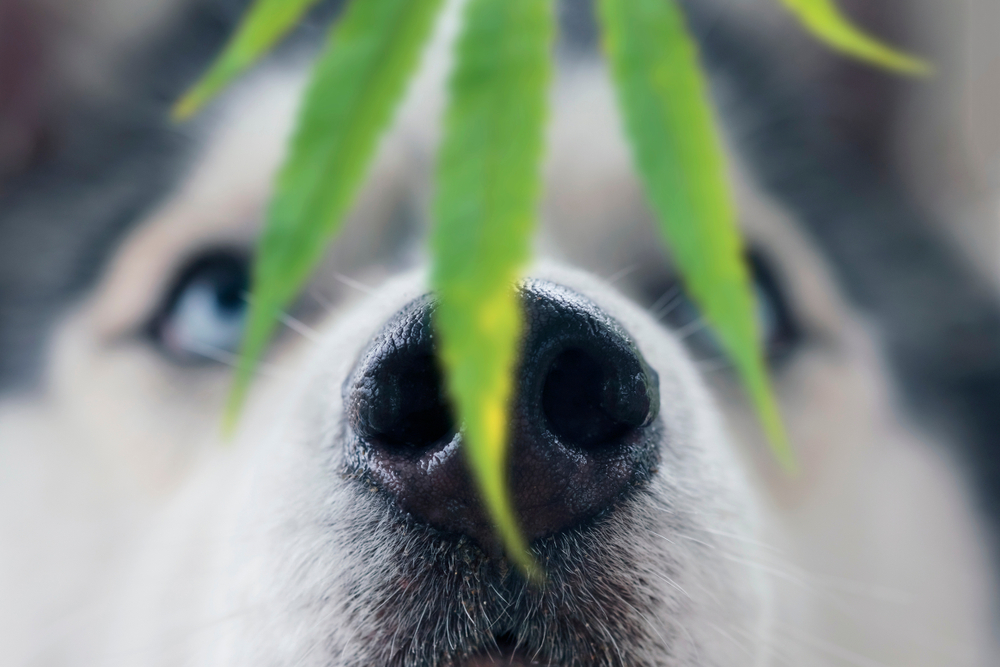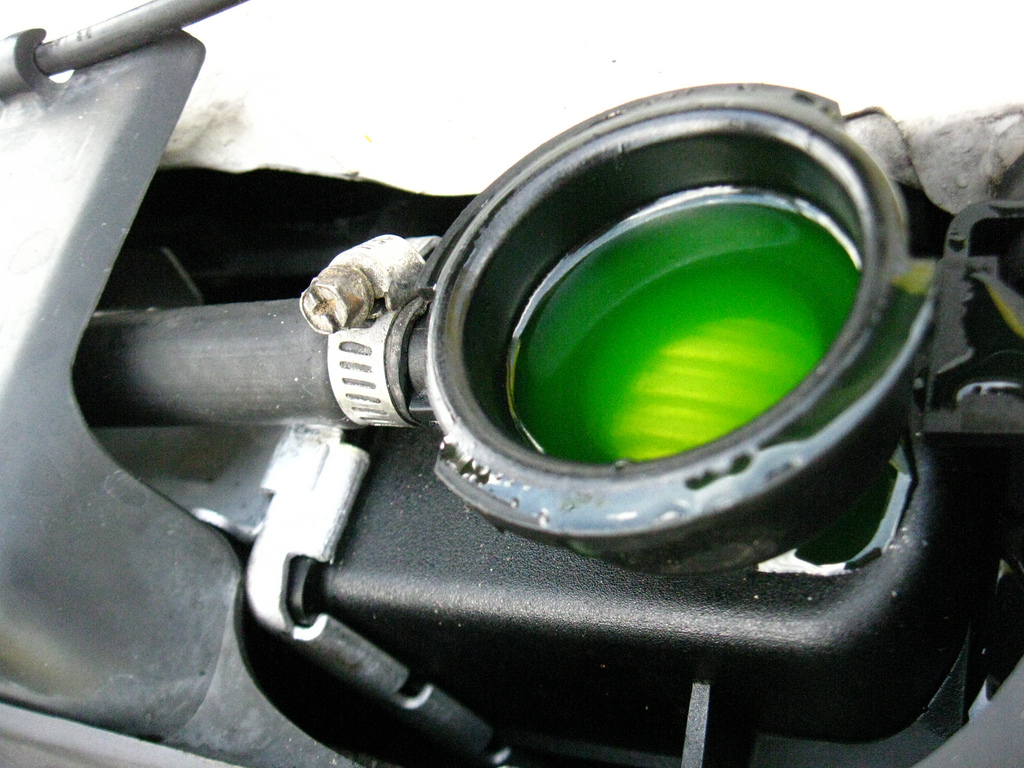Do you need help?

Seasonal dangers that dog owners should be aware of
Here we’ve included some common poisonous substances and foods we see affecting dogs.
We have split them into seasons, but actually, most can be seen at any time of year. In all cases, if you suspect your dog has eaten something he shouldn’t, try to get as much information as possible – trade name, active ingredient, the amount your dog has ingested and when it was ingested. If you have the original packaging show it to your vet.
Spring poisons
Spring flowers
Daffodils can be toxic, most often after ingestion of the bulb but occasionally after ingestion of the flower heads. This can lead to vomiting, diarrhoea and lethargy, and in severe cases, may also cause dehydration, tremors and convulsions. These signs can be seen between 15 minutes and one day following ingestion. Other spring flowers, such as crocuses and tulips, are considered to be less toxic but seek veterinary advice if you are worried your pet has ingested them.
Ivy
Dogs who eat ivy (Hedera helix) commonly develop dribbling, vomiting or diarrhoea. In more severe cases you may also see blood in the vomit or poo. Contact with ivy can cause skin reactions, conjunctivitis, itchiness, and skin rashes. It’s worth noting that poison ivy (Rhus radicans) is a different plant and is not present in the UK.
Bluebells
All parts of the bluebell plant are poisonous to dogs. Signs include vomiting, diarrhoea and abdominal discomfort. There is also a risk of heartbeat irregularity (arrhythmia) if a significant enough quantity is ingested.
Adder bites
The European adder is the only venomous snake native to the UK. Adults are around 50-60cm long and are characterised by having a black/brown zigzag pattern along their back and V-shaped marking on the back of the head. They are commonly found on dry, sandy heaths, sand dunes, rocky hillsides, moorland and woodland edges. They generally only bite when provoked by humans, dogs or cats and bites rarely occur during the winter when the snake is hibernating. Bites are more frequent in the spring and summer and result in local swelling. The swelling may spread and can be severe. Other signs include pale mucous membranes, bruising, salivation, vomiting, diarrhoea, dehydration, restlessness, drowsiness and lethargy. Eventually, animals may collapse, have blood clotting problems, tremors or convulsions. Seek veterinary attention quickly if your dog is bitten. Anti-venom is used if available (although it can be difficult to obtain) and if considered appropriate.
Anti-histamines
From spring to early summer the pollen count is at its highest and this is when owners are likely to be stocking up on anti-histamine medication. Ingestion of large amounts of anti-histamines results in signs that may include vomiting, lethargy, incoordination, wobbliness and tremors. Signs develop within 4-7 hours of ingestion. Some dogs may become hyperactive and hyper-excitable and if large amounts of anti-histamine have been eaten convulsions, respiratory depression and coma may occur.

Summer poisons
Ant powders, baits and gels
Ingestion of ant powders, baits or gels rarely results in significant poisoning. The active components of home use products tend to be at a low concentration and are often housed in containers e.g. ant bait stations. However, ingestion of some products causes significant problems and you should contact your vet for advice. Signs you may see include constricted pupils, salivation, wobbliness, tremors and an increased body temperature. Severe cases may produce respiratory depression (not breathing fast enough), convulsions and coma and the effects can be very prolonged.
Slug and snail pellets
Metaldehyde-based slug pellets are among the most dangerous and common poisonings we see in dogs. Even small amounts of pellets can cause significant poisoning and severe signs can occur within an hour of consumption. Dogs that have eaten slug pellets need to be seen ASAP as rapid intervention can save their life. Signs of poisoning can include; incoordination, muscle spasms, muscle rigidity, twitching, tremors and convulsions. Intensive treatment involving heavy sedation, control of convulsions and associated life support measures is often needed. Our case study on tragic Boris reveals just how dangerous slug and snail pellets can be.
Toad toxicity
There are two species of toad native to Britain, the common toad and the natterjack toad. The common toad is widespread, while the natterjack toad is a protected species found mainly in East Anglia and the north west of England. Exposure to toads occurs between June and August when they are spawning, toads being most active around dawn and dusk. Most toad-related incidents occur in the evening when cats or dogs lick or eat them. This can lead to signs including dribbling, frothing, foaming, oral pain, vomiting, wobbliness, shaking, an increase in body temperature and collapse. In severe cases, convulsions can occur. You should thoroughly rinse your dog’s mouth out (don’t let them swallow the water) then contact your vet for further advice. Find out what happened to Buddy when he licked a toad.
You might also be interested in:
Autumn poisons
Conkers
Serious cases of poisoning are rare – ingestion can cause marked gastro-intestinal signs – drooling, retching, vomiting, diarrhoea and abdominal pain. The conker’s case and conkers themselves also present a risk by causing an intestinal blockage. Dogs usually vomit any ingested conkers quickly and treatment to control vomiting may be needed.
Rat poison (anticoagulant rodenticides)
Most, but not all, rodenticides in the UK contain anti-coagulant compounds that interfere with a rat’s ability to clot its own blood. One-off exposure to products bought in garden centres often does not cause problems. However, repeated exposure to products or exposure to professional rodent baits can cause disruption to a dog’s blood clotting ability and result in massive haemorrhage (bleeding). The effects may be delayed for several days – blood-clotting tests are often needed to determine if a dog is at risk of developing problems. Treatment involves giving an antidote and in severe cases transfusions of plasma or whole blood.
Mushrooms and toadstools
The most common account of poisoning is by the mushroom Amanita phalloides, which is extremely toxic. Signs include mild vomiting and diarrhoea and can lead to more severe digestive problems, neurological (brain/nerve) disorders and liver disease.
Oak/acorns
Exposure to acorns in dogs is common in the autumn and winter months. The toxic ingredient is thought to be tannic acid, which can cause damage to the liver and kidneys. Signs include vomiting, diarrhoea (with or without blood), abdominal pain, inappetence and lethargy. Ingested acorns can also cause an intestinal blockage.

Winter poisons
Food hazards
Onions, nuts, blue cheese, fruit cakes, and other human foods can all be toxic to dogs. Watch out for turkey bones as these can cause choking, constipation or damage to your dog’s intestines. Find out more about Christmas food dangers
Christmas trees and plants
Most species are low toxicity but may cause a mild gastrointestinal upset (vomiting and/or diarrhoea) if chewed. Tinsel and decorations can cause intestinal blockages if eaten and your pet may get a nasty shock if they chew through the electrical cable for your Christmas lights. Holly, mistletoe and poinsettia are all toxic to dogs so keep them out of their reach.
Batteries
Ingestion of batteries is more common at this time of year. If the battery is chewed and pierced it can cause chemical burns and heavy metal poisoning. If they are swallowed whole it is possible they will cause a blockage. All batteries are potentially toxic so if you suspect your dog has chewed or swallowed a battery speak to your local vet.
Antifreeze
Ethylene glycol (antifreeze) ingestion is very dangerous. It is sweet-tasting and very palatable. Even a relatively small quantity can cause serious kidney damage and can be fatal. Unfortunately the longer the delay between ingestion of the antifreeze and initiation of treatment the less favourable the prognosis.
Other common poisons
Chocolate
Chocolate contains a stimulant called theobromine (a bit like caffeine) that’s poisonous to dogs. The amount of theobromine differs in the different types of chocolate (dark chocolate has the most in it). Find out more about the dangers of chocolate to dogs.
Raisins
Don’t forget that goodies such as hot-cross buns and mince pies contain raisins. Grapes, raisins, currants and sultanas can cause renal, or kidney, failure in dogs.
Luminous necklaces
The chemical mixture within these necklaces is very irritating to the gums – commonly causing salivation (dribbing), frothing/foaming from the mouth, vomiting and stomach pain. Although the signs can look dramatic, ingestion is unlikely to cause significant problems.
Non-steroidal anti-inflammatory drugs (NSAIDs)
NSAIDs are used for pain relief. Many human products are available over-the-counter, such as paracetamol, ibuprofen, diclofenac, naproxen or aspirin. Human NSAIDs can be toxic to all animals, but particularly to dogs where they can cause severe stomach ulceration and acute kidney or liver failure. Please do be very careful and always consult your vet before giving your dog any form of medication.
Animal NSAIDs are commonly used in veterinary medicine with trade names including Rimadyl and Metacam. Many of these have been made palatable to assist owners in giving medications to their pets. However if your pet gets hold of the medication they can eat more than they should. In cases of poisoning or overdose, toxic effects develop quickly and include persistent vomiting, vomiting blood, diarrhoea, and abdominal tenderness. Weakness and depression are often noted, though some animals show no signs of pain. Gastric (stomach) ulceration can occur without other clinical signs being present. Kidney damage is usually delayed by up to five days after poisoning and animals that are already unwell, dehydrated or with poor kidney function are at greater risk of toxic effects.
Vitamin D
Vitamin D compounds (calciferol, calcipotriol, calcitriol, cholecalciferol, tacalcitol, alfacalcidol and paricalcitol) are present in a wide variety of products. Examples include vitamin supplements, cod liver oil, rodenticides and feed additives. In human medicine they are commonly used in psoriasis treatments and vitamin D deficiencies. Veterinary uses include control of low blood calcium in cats and dogs with kidney disease. All vitamin D compounds are potentially toxic to dogs. Signs of toxicity depend on the compound and amount ingested, in the case of calcipotriol, calcitriol and tacalcitol signs may be seen within six hours and include weakness and lethargy, depression, increased water intake and increased urine output, profuse vomiting and diarrhoea. Signs progress to wobbliness, arching of the back, muscle spasms, and twitching. Fatal cases do occur, especially in dogs following ingestion of human psoriasis creams, however effective treatments are available in animals that have not developed advanced poisoning.
Salt
Common products that are very high in salt include – sterilising fluids, water softeners, dishwasher salt, rock salt (used to de-ice roads) and some bath products (e.g. dead sea salt, bath salt), stock cubes, homemade play-doh and gravy powders. Salt (sodium chloride) toxicity is extremely dangerous and potentially fatal – a toxic dose may be as little as 1/16th of a teaspoon per kg of body weight. Do not attempt to make your dog sick (following ingestion of a poison) using salt water, it can cause severe problems and interfere with the treatment your dog needs.
Cannabis/marijuana
Marijuana and cannabis poisoning in dogs is on the increase and signs can develop very quickly, although typically they take between one and three hours. These signs can include disorientation, dilated pupils, agitation, tremors, drooling, vomiting and incontinence. Owners who suspect their dog has swallowed either of these drugs should call their vet straight away.
Xylitol
Xylitol is an artificial sweetener commonly found in sugar-free chewing gum, nicotine replacement gum, sweets and as a sugar substitute in baking. If ingested by dogs it causes hypoglycaemia (low blood sugar level). You may see vomiting, an increased heart rate, wobbliness, convulsions or coma. In severe cases of hypoglycaemia, fitting may result which if prolonged, can lead to permanent neurological (brain/nerve) damage. Liver failure has also been associated with the ingestion of xylitol in dogs. The onset of signs is often less than an hour but can be delayed for 24-48 hours after ingestion. Liver damage may also develop without the signs associated with hypoglycaemia and may occur up to three days after ingestion.
Substances of low toxicity
Here is a list of common items that owners report their dogs have eaten. Most cause only mild gastrointestinal signs (such as vomiting or diarrhoea) but nevertheless contact your vet for further advice if your dog has eaten any of the following.
- Blu-tack – and other similar adhesives
- Chalk
- Charcoal
- Coal (real or artificial)
- Cut-flower/houseplant food
- Expanded polystyrene
- Folic acid tablets
- Fuchsia plants
- Honeysuckle plants
- Matches
- Oral contraceptives and hormone replacement therapy tablets
- Pyracantha plants
- Rowan tree
- Silica gel – in small sachets found in packaging of moisture sensitive goods
- Wax candles / crayons
- Sun cream
- After sun
- Ice packs (methylcellulose)
- Sunflowers
- Sand
- Slugs and snails (not toxic but are potential carriers of Lungworm)
